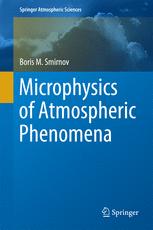

Most ebook files are in PDF format, so you can easily read them using various software such as Foxit Reader or directly on the Google Chrome browser.
Some ebook files are released by publishers in other formats such as .awz, .mobi, .epub, .fb2, etc. You may need to install specific software to read these formats on mobile/PC, such as Calibre.
Please read the tutorial at this link: https://ebookbell.com/faq
We offer FREE conversion to the popular formats you request; however, this may take some time. Therefore, right after payment, please email us, and we will try to provide the service as quickly as possible.
For some exceptional file formats or broken links (if any), please refrain from opening any disputes. Instead, email us first, and we will try to assist within a maximum of 6 hours.
EbookBell Team

4.3
58 reviewsThis book investigates elementary processes in the Earth’s atmosphere involving photons, electrons, ions, radicals, and aerosols. It is based on global atmospheric models such as the standard atmospheric model with averaged atmospheric parameters across the globe and over time, the Earth’s energetic balance, and the global electric circuit that allows to analyze fundamental atmospheric properties to be analyzed. Rate constants of elementary processes in the Earth’s atmosphere, together with measured atmospheric parameters and existing concepts of atmospheric phenomena, are used in the analysis of global and local atmospheric processes. Atmospheric photoprocesses result from the interaction of solar radiation with the atmosphere and processes involving ions, oxygen atoms, excited atomic particles and ozone molecules. Atmospheric electricity as a secondary phenomenon to atmospheric water circulation results in a chain of processes that begins with collisions of water aerosols in different aggregate states. Cosmic rays are of importance for atmospheric electricity, as they create positive and negative ions in the air. Air breakdown in an electric field of clouds in the form of lightning may develop under the influence of cosmic ray-created seed electrons, which are necessary for electron multiplication in ionization wave-streamers. The upper atmosphere (ionosphere) is formed under solar radiation in a vacuum ultraviolet spectrum, and absorption of this radiation leads to air photoionization. The greenhouse effect is determined by atmospheric water, whereas transitions between a water vapor and aerosols may lead to a change in atmospheric optical depth. Carbon dioxide contributes in small portions to the atmospheric greenhouse effect. Cosmic rays are of importance for atmospheric discharge, the origin of lightning and cloud formation in the first stage of aerosol growth. This book provides a qualitative description of atmospheric properties and phenomena based on elementary processes and simple models.